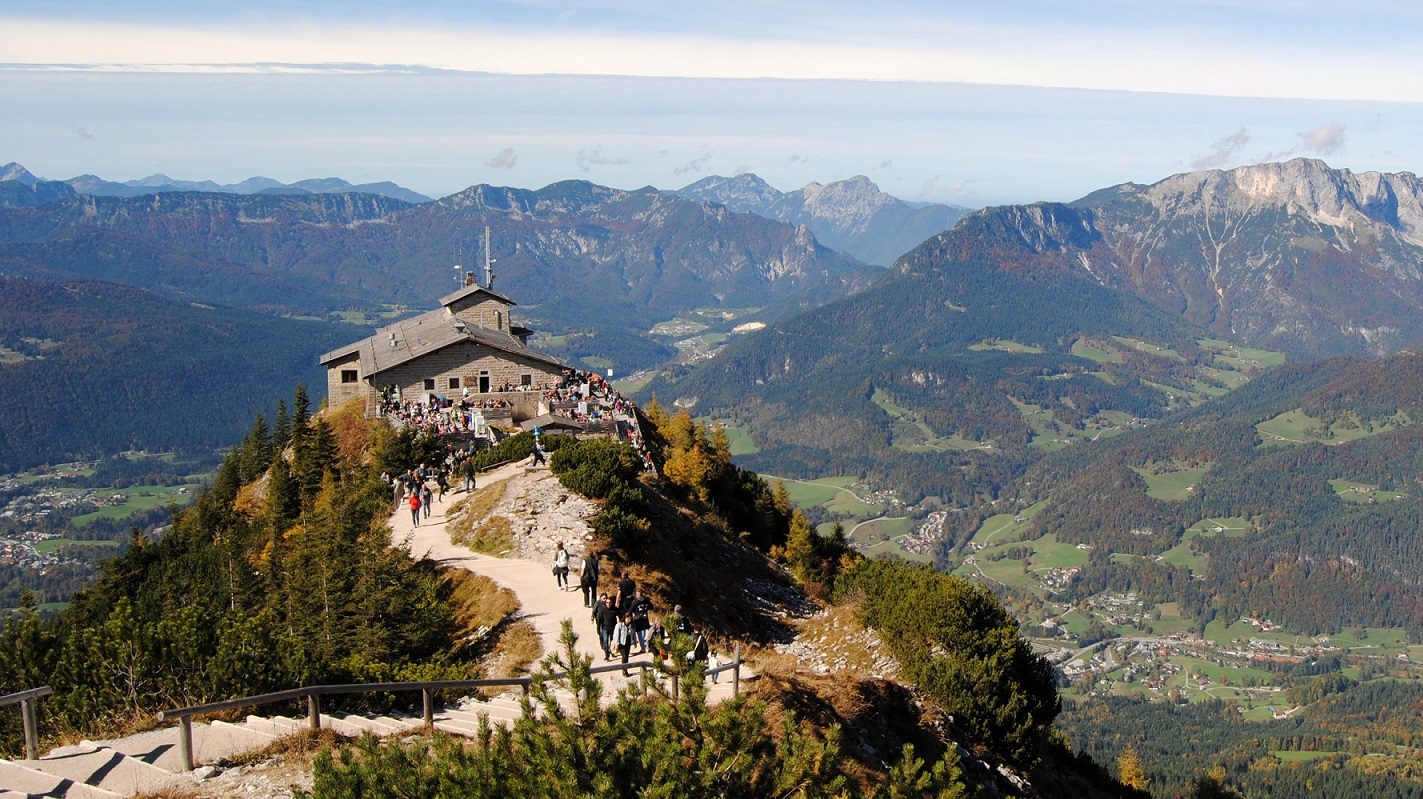Tournament theory: Why Allied forces competed to capture Hitler’s Eagle’s Nest

- Tournament theory can explain how people behave and how to motivate them in high-stakes situations.
- It also predicts that participants will sabotage each other.
- During WWII, American and French troops temporarily behaved as if capturing a prestigious prize was more important than defeating Germany.
In some cases, winning isn’t everything but rather the only thing. Whoever gets first place takes a massive prize, and whoever comes behind that gets nothing. For cases like these, economists turn to tournament theory to explain why people act the way they do, how to incentivize them, and what happens when people realize that they must do better than everyone else to win.
In a new article published in American Business Review, two authors seek to explain the social dynamics of tournaments and provide a review of the literature on the topic through a very interesting historical example: the Allied capture of Hitler’s Eagle’s Nest.
Tournament theory
Tournament theory was first put forth to explain why companies can have such large pay gaps between those who are promoted and those who are not. Rather than paying people exactly what they are worth, employees can be motivated to work harder now if they are given a massive pay increase as a result of being promoted.
This also solves the problem of determining output values that are difficult to measure. While a CEO might not work five times as much as the vice president of marketing, the promise of such a large raise upon getting a promotion is an excellent way to motivate somebody to work hard in the position they are currently in. The CEO is probably motivated to keep their job as well.
The model can also be used to explain how people will behave in other tournament settings such as sports, academia, and even writing. In each of these cases, doing better than everybody else (either by winning a game, getting tenure, or landing a place on the bestseller list), earns a much bigger prize than whatever consolation is offered for second place.
Of course, these systems also create incentives for teams not to work well together. Since the only way to win is to do better than others, the motivation to cooperate vanishes, and in some cases, people may become motivated to sabotage others. As a result, the tournament model can increase the likelihood of cheating in sports and plagiarism in academia.
Capturing Hitler’s Eagle’s Nest
The authors describe a great example of how tournament theory can describe behavior: It is the story of how three units — two American and one French — stopped working together, as they had been for the whole of World War II up to that point, and began actively competing with and even obstructing one another in the race to capture Hitler’s mountain retreat.
After rising to the top of the Nazi Party, Adolf Hitler enjoyed spending time in the Bavarian Alps. The town of Berchtesgaden, a small mining town in 1933, became the center of what came to be known as the Führer area, featuring homes owned by many leading members of the Nazi Party, SS barracks, and the apparatuses needed to maintain the villas of a large collection of national and party leadership. Hitler’s personal mountain villa, The Berghof, where he spent nearly a third of his time in power, was located here. The Eagle’s Nest, a chalet for Hitler’s personal use, was located nearby.
While the capture of these locations was of some strategic benefit to the Allies — the town and the nearby houses could have served as the base for a last ditch defense of Bavaria by high-level Nazis — the primary benefit was the prestige of being the unit to capture them. Three units in the vicinity of the town in 1945, the French 2nd Armored Division, the U.S. 101st Airborne Division, and the 7th Infantry Regiment of the U.S. 3rd Infantry Division, knew this and wanted that prestige.
The 3rd infantry, fresh off the bloodless capture of Salzburg, Austria, had captured the last two bridges, allowing for an approach to Berchtesgaden. Their commander requested permission from Allied commander Dwight Eisenhower to capture the town but was denied, as the zone had already been designated for the 2nd and 101st.
After two days of waiting, the commanders of the 3rd decided to ignore their orders. They sent a strike force into Germany, while blocking off access to the bridges they had captured to other Allied units, including the 2nd and 101st. After a brief engagement with a unit of the SS, two battalions of the 3rd captured the town. It was only then that the 2nd and 101st were allowed to cross into Germany. Battalions of the 3rd then quickly moved to capture the Berghof.
After the later two units arrived, the town was divided into French and American occupation zones, with the French zone containing many of the homes of the Nazi brass. The leaders of the 3rd later changed their minds about giving the French these prizes and sent men into their zone with the goal of raising American flags on the Berghof. The French, likely remembering the roadblock on the bridges, blocked access to the location and only later agreed to a joint flag-raising ceremony.
The first division to capture the Eagle’s Nest forgot to make sure there was definitive proof that they did so. It was either the 101st Airborne or the French — but nobody has made much of an issue about the competing claims over the past seven decades.
The winner-take-all nature of the capture meant that the incentive to help somebody else gain the glory of capturing the town was minimized, while the payoff for obstructing was maximized. Even the immediate goal of working together to fight the Germans was cast aside for a while, as the units took steps to inhibit the others from winning the tournament.
High stakes, high reward, winner-take-all tournaments can create powerful incentives for groups and individuals to reach their goals. However, they can also encourage people to turn on one another in pursuit of the biggest prizes — so much so that people who had spent a whole war on the same side could hinder each other’s progress in pursuit of fame and glory.





